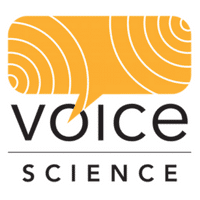Vibrant Voice with Resonant Voice Therapy: The Ultimate Guide from Voice Science
Learn how to optimise your voice production through resonant voice therapy.

Do you notice how important your voice is while using it every day, or only when you lose it to a cold or overuse? Every voice is precious and needs to be taken care of. Don’t shout that from the rooftops until we’ve assessed whether you’re projecting your voice in a healthy way!
Resonant Voice Therapy is a method used by speech pathologists to optimise voice production to keep it vibrant, healthy and resilient, leading to countless social and professional benefits.
Read on to see if your vocal resonance needs some love; the Voice Science team is here to help you give it the attention it deserves.
What does Resonant Voice even mean?
For a voice to be ‘resonant’ in speech pathology, we’re looking (or listening) more specifically for tone and quality than just loudness, even if resonant voices can, in fact, achieve good volume.
Musical instruments can help us understand this point. Let’s take:
- two violin players:
- an absolute beginner, and
- a seasoned professional;
- two violins:
- a very cheap student violin needing new strings, and
- an expensive, handmade instrument in pristine condition.
This gives us four possible configurations with corresponding sound quality:

- the beginner doesn’t automatically sound amazing on the expensive violin, but it helps!
- the professional applies high-level skill to get a semi-decent tone out of the cheap violin.
Imagine the beginner’s strained, jerky bow movements, while the professional makes it look so easy. With well-practised and efficient bow movements, beautiful sound seems to leap right off the violin with minimal effort.
So how about a resonant voice?
We achieve high quality sound with minimal effort when we:
- maximise the physical health of the vocal cords; and
- train muscular coordination for breathing, voice production and sending the sound forward through the mouth.
The final product is called forward resonance. Think ease of production meets pleasing sound quality. Plus, we can easily project when needed.
Say hello to vocal comfort and goodbye to strain!
How do I know if I need Resonant Voice Therapy?
With so much information at our fingertips nowadays, we often feel we should figure things out by ourselves. When it comes to choosing Resonant Voice Therapy, trust the professionals. A speech pathologist is a trained professional who can make the decision with you. Click here to get started with one at Voice Science!
So, a better question is: How do I know if I need a voice assessment? Now we’re talking.
Here’s what you’ll get from healthy vocal function:
- Stamina: your voice can make it through all of your daily tasks without wearing out;
- Comfort: voice use doesn’t cause any throat pain;
- Expression: your intonation can smoothly rise and fall while talking;
- Volume: you can produce appropriate volume in different tasks and settings;
- Projection: your voice can carry across a reasonable space when required; and
- Presence: your voice solidifies your place in a communication exchange, engaging your listener(s).
If your voice is letting you down in any of these areas, we highly recommend that you complete our Diagnostic Voice Assessment, especially if it’s affecting your social and professional goals. If something doesn’t feel or sound right about your voice, that’s your sign to get in touch.
The Voice Science clinicians will get to know your individual situation to understand how you need your voice to work for you. Don’t assume that only singers and public speakers are entitled to vocal care, everyone’s voice serves a purpose!
It’s worth noting that Resonant Voice Therapy has also been found to be effective in treating vocal fold nodules. If you receive this diagnosis from an Ear, Nose & Throat specialist (ENT), it’s likely that they’ll refer you to a speech pathologist for voice therapy, and that’s where we come in!
Has the above information left you wanting some help in the voice department? Look no further than our Diagnostic Voice Assessment!
This service will guide you through recording voice samples, then one of our speech pathologists will meticulously analyse your recordings and decide which voice therapy pathway is most appropriate for you. You’ll hear all about their observations and your next steps in a one-on-one session!
How is Resonant Voice Therapy done online?
To top it off, we teach you tactile cues you can feel, to empower you to evaluate whether you’re producing high quality voice tone. Turns out you won’t need to rely quite as much on your hearing as you may have imagined, meaning Resonant Voice Therapy is also completely suitable even if you have hearing loss!

Fitting in practice for Resonant Voice Therapy
From SMART goals to habit stacking, the clinicians at Voice Science are old hands at coming up with clever practice hacks, however, do keep in mind that voice therapy requires daily time commitment for best results.
So approach voice therapy from a realistic perspective: it will take up some of your time, but you will be able to fit it in.
So, what’s next?
Here are the first two steps to enhance your vocal function and comfort:
- Complete our Diagnostic Voice Assessment at a time that suits you.
- Book an appointment so one of our clinicians can explain your assessment and your personal voice therapy action plan!
If you have any questions, you can get in touch with us in the following ways:
- ✉️ Send us an email
- 💻 Fill out our online enquiry form, or
- 📞 Give us a call on +61 03 9042 3648


